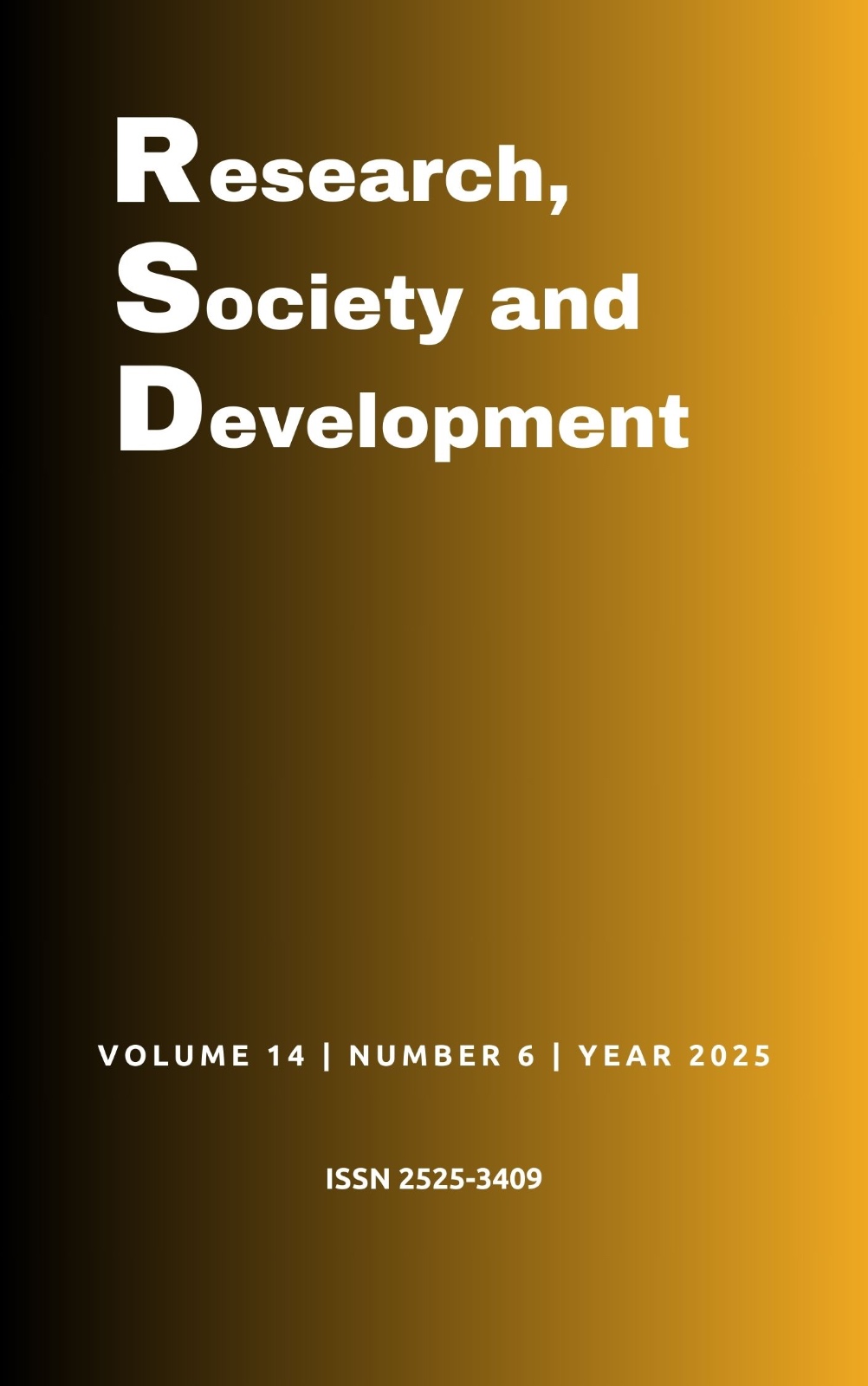The strong goldbach conjecture and the function g(n): An analysis of prime distribution
DOI:
https://doi.org/10.33448/rsd-v14i6.48924Keywords:
Mathematics, Conjecture, Goldbach, Primes.Abstract
Goldbach's Conjecture, an ancient and important problem in number theory, states that every even number greater than 2 can be expressed as the sum of two prime numbers. Although many advances have been made in the search for a solution to this conjecture, it remains unsolved to this day. The goal of the article is to analyze the relationship between Goldbach's Conjecture and the distribution of prime numbers, two fundamental questions in number theory. The main results and theories used by mathematicians to try to solve the conjecture will be presented, as well as discussing how the study of prime number distribution can lead to significant advances in this search. The importance of the research lies in solving one of the greatest mysteries in mathematics, as well as in the implications of the conjecture in other areas of science and technology. Additionally, the research contributes to the advancement of number theory and the understanding of prime number distribution, a fundamental problem in mathematics.
Downloads
References
APostol, T. M. (1998). Introdução à teoria analítica dos números. Editora LTC.
Bertone, A. M. A. (2014). Introdução à Teoria dos Números. UFU.
Bernardes, R. M. (2020). Ensaio matemático sobre a conjectura de goldbach. https://www.conic-semesp.org.br/anais/files/2020/trabalho-1000005615.pdf.
Bertone, A. M. A. (2014). Introdução à Teoria dos Números. Uberlândia, MG: UFU.
Derbyshire, J. (2012). Obsessão prima. Editora Record.
Eves, H. (2011). Introdução à história da Matemática. (5ed). Editora da Unicamp.
Gil, A. C. (2017). Como elaborar projetos de pesquisa. (6ed). Editora Atlas.
Goldston, D. A. & Suriajaya, A. I. (2023). On an average Goldbach representation formula of Fujii. Nagoya Mathematical Journal, Cambridge. 250, 511–32. https://www.cambridge.org/core/journals/nagoya-mathematical-journal/article/abs/on-an-average-goldbach-representation-formula-of-fujii/9C6EF5AA639674AD7AFF4A9F91BD72E3
Granville, A. (2015). Prime Number Patterns. The American Mathematical Monthly. 122(4), 299–315.
Hardy, G. H. & Wright, E. M. (2008). An introduction to the theory of numbers. (6.ed). Oxford University Press.
Helfgott, H. A. (2023). The ternary Goldbach conjecture is true. Annals of Mathematics Studies. 203. https://arxiv.org/abs/1312.7748.
Ikeda, K. & Suriajaya, A. I. (2025). The average number of Goldbach representations over multiples of q. https://arxiv.org/abs/2405.04315v4.
Lima, R. F. (2016). Introdução à geometria diferencial. Macapá: SBM.
Maiers, R. R. (2005). Teoria dos números. Universidade de Brasília. http://www.mat.unb.br/~maierr/tnotas.pdf.
Montgomery, H. & Vaughan, R. C. (2006). Multiplicative Number Theory I: Classical Theory. Cambridge: Cambridge University Press.
Niven, I., Zckerman, H. S. & Montgomery, H. L. (2009). Uma introdução à teoria dos números. Editora LTC.
Oliveira e Silva, T., Herzog, S. & Pardi, S. (2014). Empirical verification of the even Goldbach conjecture and computation of prime gaps up to 4 x 10^18. Mathematics of Computation, Providence. 83(288), 2033–60. doi:10.1090/S0025-5718-2013-02787-1.
Pereira A. S. et al. (2018). Metodologia da pesquisa científica. [free e-book]. Editora UAB/NTE/UFSM.
Ribas, R. A. (2011). Teoria dos Números: uma introdução para o ensino superior. Editora Livraria da Física.
Rieu, C. (2015). Criptografia e números primos: fundamentos e aplicações. Editora Bookman.
Sousa, J. E. (2013). Conjetura de Goldbach - Uma visão aritmética. 130f. Departamento de Matemática da Universidade dos Açores, 2013. https://repositorio.uac.pt/bitstream/10400.3/2881/1/DissertMestradoJoseEmanuelSousa2013.pdf.
Yin, R.K. (2015). O estudo de caso. Editora Bookman.
Downloads
Published
Issue
Section
License
Copyright (c) 2025 Alice Maria Rodrigues Barros; Dayana Maria Silva Silvestre; Evódia Patrícia S. Veríssimo; Gizelly Juliane de O. S. Eloi Batista; Hallana Thaysa Costa Barros

This work is licensed under a Creative Commons Attribution 4.0 International License.
Authors who publish with this journal agree to the following terms:
1) Authors retain copyright and grant the journal right of first publication with the work simultaneously licensed under a Creative Commons Attribution License that allows others to share the work with an acknowledgement of the work's authorship and initial publication in this journal.
2) Authors are able to enter into separate, additional contractual arrangements for the non-exclusive distribution of the journal's published version of the work (e.g., post it to an institutional repository or publish it in a book), with an acknowledgement of its initial publication in this journal.
3) Authors are permitted and encouraged to post their work online (e.g., in institutional repositories or on their website) prior to and during the submission process, as it can lead to productive exchanges, as well as earlier and greater citation of published work.


